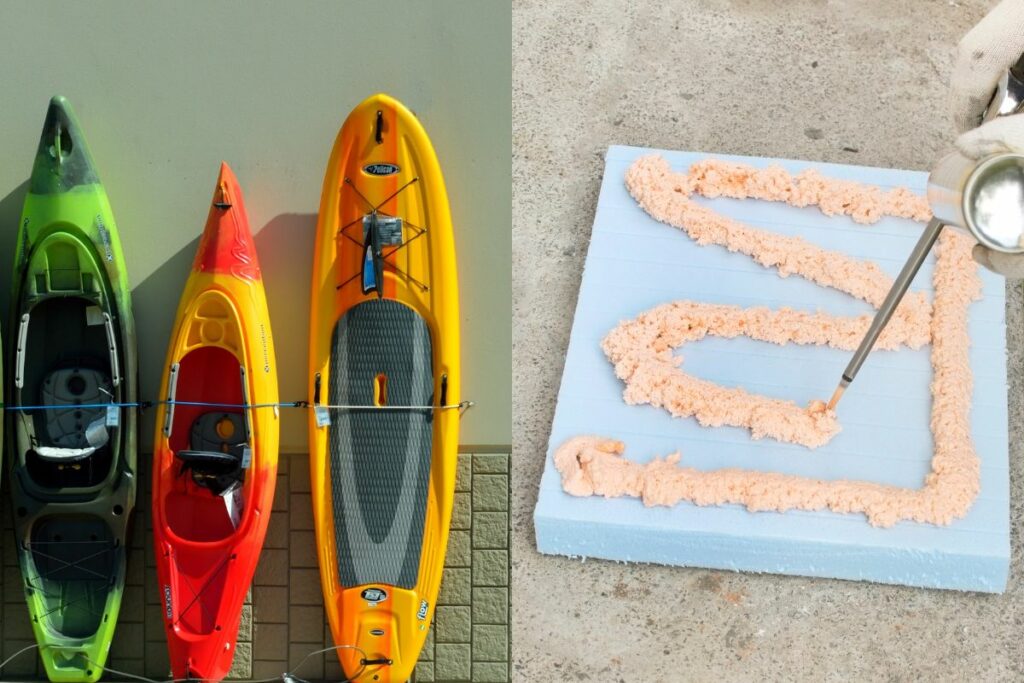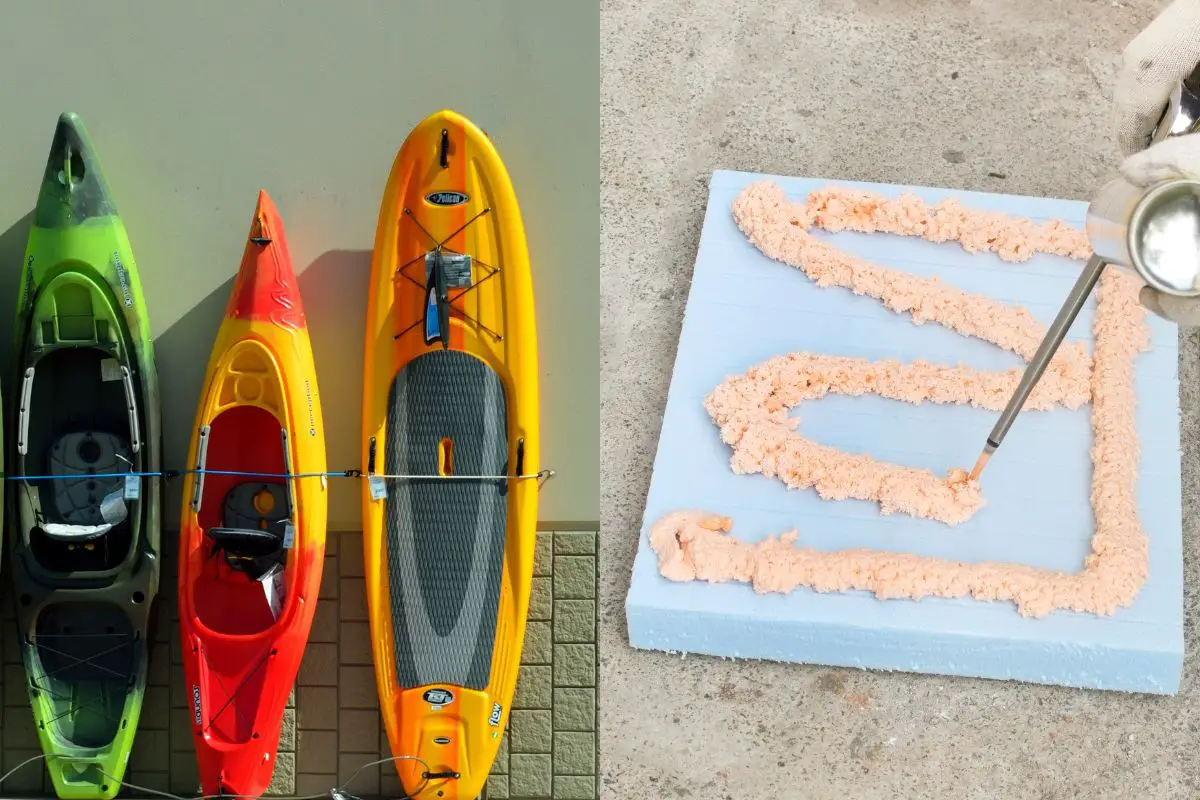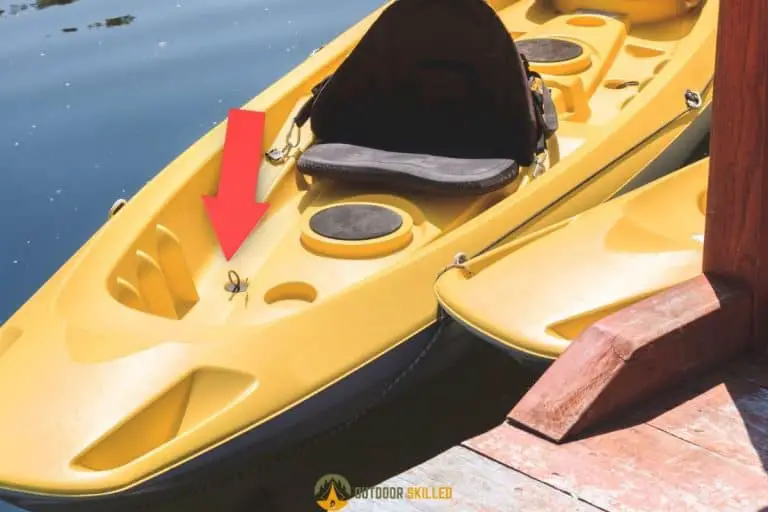Can You Fill a Kayak With Foam? Use this Instead…
Kayaks are typically made of lightweight materials, which makes them buoyant, easy to maneuver on the water, and sturdy.
However, some kayak owners look to enhance their kayak performance by filling it with foam. But can you fill a kayak with foam to make it more efficient?
It is not recommended to fill a kayak with foam as it can compromise the kayak’s efficiency and the kayaker’s safety. The foam filling does not provide additional structural support or increase buoyancy on the water. It can also absorb water, making the kayak heavier and harder to maneuver.
Keep reading as we break down the safety concerns of filling a kayak with foam and provide alternatives to use instead of foam.
Table of Contents
Can You Fill a Kayak With Foam?

Kayaks are usually made of plastic or fiberglass. These materials are buoyant and lightweight to make the kayak easier to maneuver, and at the same time, they’re still sturdy enough to withstand the rigors of being on the water.
However, some kayakers fill their kayaks with foam, thinking this will make their kayaks more buoyant or provide additional structural support. But does this actually work?
Well, the short answer is no, and it is not recommended to fill a kayak with foam.
Using foam does not provide the same level of structural support and can weaken the integrity of the kayak over time. For instance, using expanding foam can cause the kayak to expand or split if the foam is not applied evenly or if the kayak is not designed to accommodate the added stress.
Additionally, the open-cell structure of foam means that it can absorb water, which will make your kayak heavy and harder to maneuver.
Other Safety Concerns with Using Foam in Kayak Construction
When using foam in kayak construction, it is important to consider the potential safety concerns that may arise. Some of the most noteworthy safety concerns to keep in mind include flammability and toxicity.
Many types of foam are highly flammable, which means that they can burn easily and rapidly, resulting in a severe fire that could cause injury or death.
To minimize this terrible risk, it is important to use foam that has been treated with flame-retardant chemicals or to use foam that is naturally flame-resistant.
Some types of foam also release various chemicals when they are burned or exposed to high temperatures. These chemicals can be harmful to human health and can cause respiratory issues, skin irritation, and other health problems.
To minimize this risk, it is important to use foam that is free of hazardous chemicals or to use foam that has been treated to reduce its toxicity.
It is also vital to consider the importance of proper handling and application of the foam to avoid any possible risk of inhaling the chemicals during application. It is always recommended to use personal protective gear when handling foam and to make sure that the area is well-ventilated.
Types of Construction Foam: Closed-Cell vs. Open-Cell Spray Foam
Each type of foam has its own unique properties and characteristics that make it suitable for different applications. Regarding kayak construction and insulation projects, closed-cell and open-cell spray foam are the two types of foams that are commonly used.
Closed-cell spray foam is a type of foam that is composed of minuscule sealed pockets of air, giving it its name.
It is known for its high insulation value, water resistance, and structural strength. It is also a good option for air sealing, providing an effective barrier to air and moisture.
Open-cell spray foam, on the other hand, is composed of small pockets of air that are not sealed, which gives it a spongy or soft texture.
It is known for being amazing at soundproofing and is typically less dense and less expensive than closed-cell spray foam. However, because the cells are not sealed, it does not have the same level of water resistance or structural strength as closed-cell spray foam.
What to Use for Kayaks Instead of Foam?

I suggest using flotation bags if you want to provide additional flotation in a kayak. These specially designed bags can be filled with air and placed inside the kayak to provide additional buoyancy.
They are available for most kayak models and can be an easy and cost-effective solution for providing additional flotation.
Check out these Oru Kayak Float Bags on Amazon; they are made of puncture-resistant nylon materials, are easy to inflate, and come reasonably priced.

However, if you are looking to repair a kayak that has cracks or thin spots, there are several options available.
One option is to use epoxy or other types of resin to fill in the cracks and reinforce the damaged area.
Another option is to use a patch or repair kit specifically designed for kayaks. These handy kits usually include a patch material and instructions for how to apply it to the damaged area.
They are also quite affordable.
If you are looking for a recommendation, I highly recommend this kayak and canoe repair kit from Amazon, which I used before and liked enough to buy another one to keep around.

In both cases, it’s immensely important to make sure that the repair is done properly to ensure the kayak’s safety and durability.
Conclusion
While the idea of filling a kayak with foam may seem appealing, it is not a safe or practical option due to the lack of structural support and potential for water absorption.
If you’re seriously worried about your kayak sinking, there are plenty of other options, like flotation bags or even a life jacket that will keep you floating like a cork.
Kayak your way to Freedom
- On a budget? Check out the best fishing kayaks under $500 here and the best Fishing Kayaks under $1,000 here. Or Check the best Cheap Kayaks here.
- Going fishing? Here are the best Ocean fishing kayaks, and here are the best River Fishing Kayaks.
- You can also find the best Fly Fishing Kayaks here and the best Bass Fishing Boats here.
- A bit experienced? Check out the best modular kayaks here and the best tandem fishing kayaks here.
- Looking for something special? Check out my favorite Ducky kayaks here.
- Navigate your way with these awesome and beginner-friendly Kayak compasses.
- Going Hunting? These Duck hunting kayaks will give you an unfair advantage!
- Have a need for speed? These motorized kayaks will get you moving.
- Protect yourself from the sun with these Kayak shades, and make your kayak more comfortable with these Kayak seats.
- Keep your feet dry and warm with these superb Kayaking shoes.
- Going Kayaking in cold water? Stay warm with these Kayaking gloves.
- Paddle Less, Fish More with the Best Kayak Motors
- Looking to get a trolling motor on your kayak? Check out the best kayak trolling motor mounts here.
If you like this article, please share it or pin it, you can find the share buttons below. We will really appreciate it ❤️


![The Best Kayaking Gloves in 2023 [After Testing Dozens]](https://outdoorskilled.com/wp-content/uploads/2023/04/kayak-gloves-768x512.jpg)





